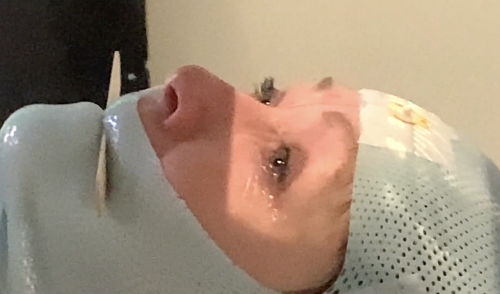In a tearful announcement, actress Shannen Doherty revealed that her breast cancer, which was first diagnosed in 2015, has spread to her brain, according to US Weekly.
Breast cancer is the second most common cancer among women, after skin cancer. Nearly 288,000 women in the United States are diagnosed with invasive breast cancer annually, and about 1 in 8 women will receive a diagnosis in their lifetime. What’s more, around a quarter of women with early breast cancer will go on to develop metastatic disease, meaning that the cancer has spread to other parts of the body, according to Cancer Health’s Basics on Breast Cancer.
Doherty, 52, shared the update via an Instagram caption accompanying a video of her receiving radiation treatment for the brain metastases earlier this year. The caption reads: “January 12, 2023. On January 5th, my ct scan showed Mets [short for metastases, or cancerous growths] in my brain. Yesterday’s video was showing the process of getting fitted for the mask which you wear during radiation to your brain. January 12, the first round of radiation took place. My fear is obvious. I am extremely claustrophobic and there was a lot going on in my life. I am fortunate as I have great doctors like Dr. Amin Mirahdi and the amazing techs at Cedar Sinai. But that fear…. The turmoil….. the timing of it all…. This is what cancer can look like.”

Shannen Doherty shared a video of her radiation treatment for breast cancer that spread to her brain.Instagram/@theshando
The Beverly Hills, 90210 and Charmed alum was first diagnosed with breast cancer in March 2015; by 2016, it had spread to her lymph nodes. After undergoing chemotherapy through February 2017, she announced that she was in remission. In 2020, however, she told Good Morning America that her cancer had returned and that it was Stage IV.
Doherty’s Instagram post garnered hundreds of messages of support from longtime fans and celebrities alike. Kevin Smith, who directed Doherty in Mallrats and Jay and Silent Bob Strike Back, wrote: “Rooting for you, my irreplaceable friend. You have been such a fearless fighter your whole life, so it’s understandable to be a little scared from time to time. But when those moments pass, let that indomitable Doherty spirit take over anew. I love you so much, my Mallrat.”
For related articles, click the hashtag #Metastatic Breast Cancer and check out Cancer Health’s Basics on Breast Cancer. It reads in part:
What are the risk factors for breast cancer?
According to the Centers for Disease Control and Prevention, besides being a woman and getting older, factors that influence the risk of developing breast cancer include:
– Genetic mutations (including BRCA1 and BRCA2)
– Family history of breast cancer
– Early onset of menstruation or early menopause
– No full-term pregnancies or first pregnancy at an older age
– Not being physically active
– Overweight or obesity, especially after menopause
– Use of oral contraceptives or hormone replacement therapy
– Previous radiation therapy
– Drinking alcohol.
What are the symptoms of breast cancer?
The most common sign of breast cancer is a lump or mass. A hard and painless mass is most likely to be malignant, but cancerous tumors can sometimes be tender, soft or painful. Other symptoms may include breast swelling, skin irritation or dimpling, breast or nipple pain, nipple retraction (turning inward), redness, scaliness or thickening of the nipples or skin of the breast and discharge from the nipple.
How is breast cancer treated?
Treatment for breast cancer depends on how advanced the cancer is when it is detected, including how many tumors there are, how large they are and whether they have spread to nearby lymph nodes or other parts of the body.
Treatment can be broken down into local and systemic therapies. Local therapies, such as surgery and radiation, treat cancer in the breast. Systemic treatments, which can reach cancer cells that have spread elsewhere in the body, typically cause more side effects.







Comments
Comments